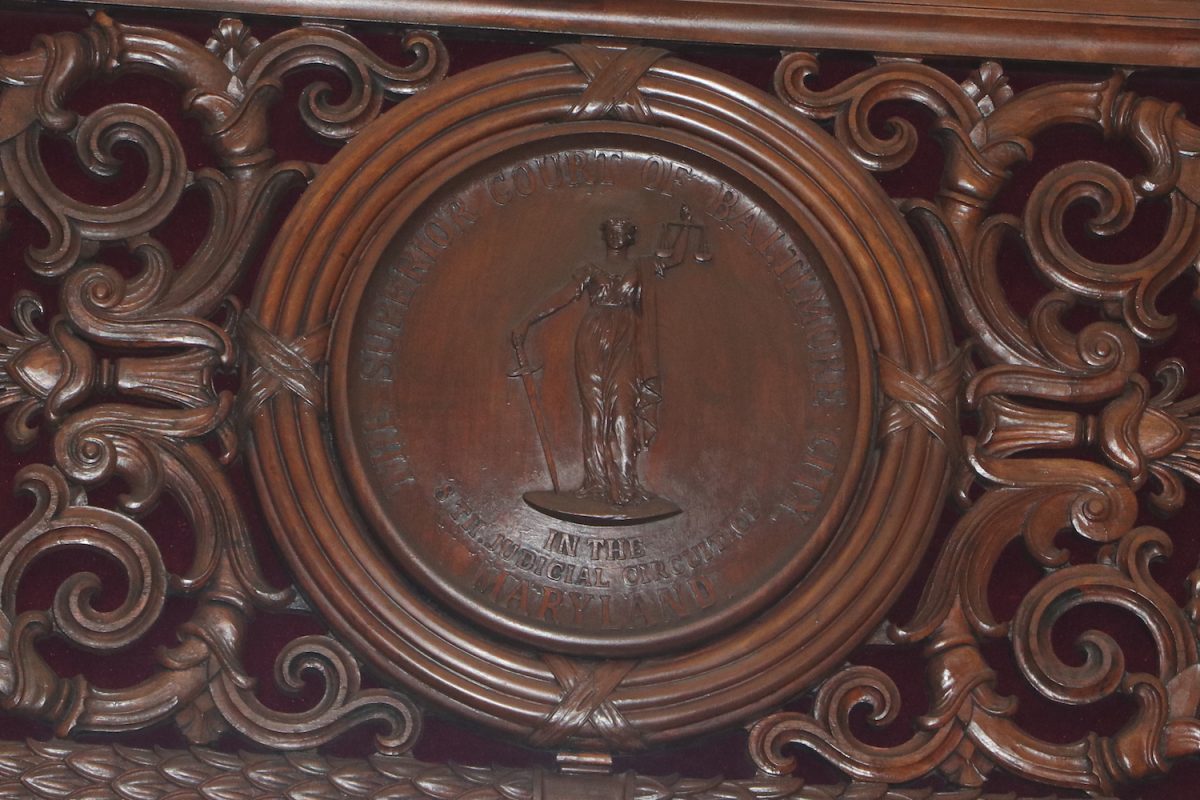
Thank you for reading Baltimore Witness.
Consider making a donation to help us continue our mission.
By
Connor Driscoll [former]
- August 13, 2021
Court
|
Daily Stories
|
Homicides
|
Shooting
|
Suspects
|
Victims
|
The defense and the prosecution sparred over the reliability of a Federal Bureau of Investigation (FBI) cell location analysis allegedly placing a homicide defendant’s phone in the area of the shooting when it occurred.
The trial of Clifford Knight entered its third day at Baltimore City Circuit Court on Aug. 12. Knight is charged with first-degree murder, firearm use in a violent crime, having a loaded handgun in his vehicle, possession of a loaded handgun on his person, and felon in possession of a firearm. If convicted of the charges, he could face up to life in prison.
Prosecutors allege that Knight, 24, lured 26-year-old Ronald Lewis to a midnight ambush on May 14, 2020. The shooting took place on the 100 block of Violet Hill White Way, just across the street from the University of Maryland’s School of Pharmacy.
On Thursday, the prosecution called the author of the FBI report to the stand.
The special agent had performed a location analysis on two phones, one linked to Knight’s. The other is alleged to belong to the 23-year-old owner of the suspected car used in the shooting. According to prior testimony, the owner of the car had three calls with Knight on the days leading up to the shooting.
The FBI agent testified that the analysis uses the amount of time it takes a phone to connect to the cell tower in order to determine a possible radius of where the phone is at the time of connection.
Both phones were linked to within .01 miles of the scene of the murder at the relevant date and time. The two phones were then tracked moving to a location in East Baltimore.
However, Knight’s defense attorney, Robert Cole Jr., argued that the analysis could only indicate the “general geographic area” of the phone’s location. He also said there was no way to determine whether Knight was in possession of that phone at the time of the homicide.
In addition to the owner of the car, prosecutors also showed a connection between Knight and the 26-year-old man who was eventually arrested with the murder weapon. In fact, the lead detective said, Knight had called him twice in the two hours prior to the murder.
The 20-year law enforcement veteran also highlighted comments Knight made to an incarcerated man during a recorded jail call. Knight said that he had to change his phone number because people were “throwing parties.” The phrase, the detective said, is often code for involvement in a shooting.
Cole questioned this interpretation, suggesting that Knight could have been using the phrase literally.
New details about the nature of Lewis’ fatal gunshot wounds also emerged during the trial on Thursday.
The medical examiner (M.E.) tasked with Lewis’ autopsy said that the gunshot wounds were “rapidly fatal,” causing death in as little as one minute. Lewis was shot in his left cheek, severing his carotid and jugular arteries and causing massive blood loss. Additionally, he suffered a gunshot to the neck, which injured his spinal cord.
Pinpoint-like abrasions caused by gunpowder residue also indicated that the shooter was likely 12 to 18 inches away from Lewis, the M.E. said, suggesting the shots were fired from inside a car.
Cole argued that such a determination was not the M.E.’s expert opinion on this particular shooting but rather a “rule-of-thumb” guess based on the injuries.
Witness testimony concluded after Knight chose not to testify.
Cole then motioned Judge Martin P. Welch to acquit Knight on all charges. He reiterated the assertion that the state’s case was merely circumstantial and lacked both physical evidence and eyewitness identification.
Judge Welch denied the motion.
Cole is expected to formally rest the defense’s case on Aug. 13. After closing arguments, Knight’s fate will be in the hands of the six women and six men of the jury.
